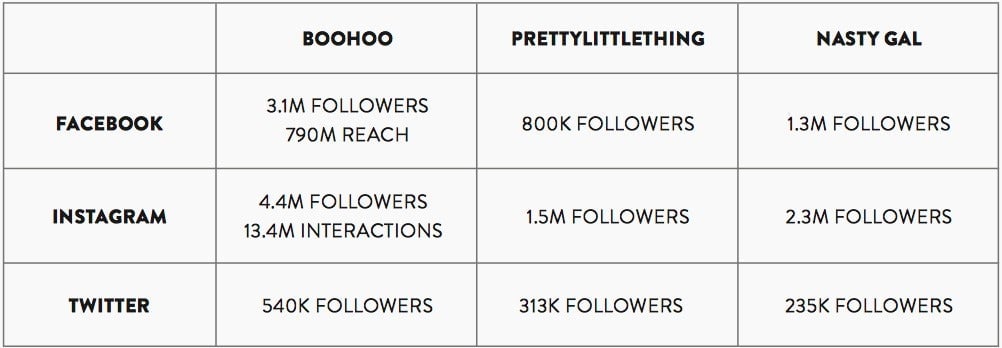Boohoo’s soaring profit shows how fast fashion looks unencumbered by brick-and-mortar stores
Mass-market fashion is a tough business, but fast-fashion chains and ecommerce retailers are proving to have big advantages over their rivals.


Mass-market fashion is a tough business, but fast-fashion chains and ecommerce retailers are proving to have big advantages over their rivals.
UK-based Boohoo happens to be both, and it’s making a killing.
The company’s preliminary earnings (pdf) for 2016 showed sales jumping 51% to £294.6 million ($378.2 million) and operating profit doubling. In the US, where mall-based fashion chains and department stores are shutting at record rates, Boohoo’s sales grew 145%.
Of course the company, founded in 2006, is starting from a smaller sales base than more established competitors, making it easier to achieve eye-popping growth. But Boohoo clearly has a lot going for it.
It is fast—faster even than H&M and Zara, according to analysis by Goldman Sachs. That speed allows it to react quickly to market changes, so it can restock racks quickly with items that are selling well. That also enables it to reduce the risk of producing large volumes before knowing whether a style might sell poorly and have to be discounted, helping keep its products extremely cheap.
Second, Boohoo sells online only at a time when more fashion is being bought via commerce and the cost of maintaining a network of physical stores and staff is becoming more burdensome.
These factors are working together to Boohoo’s advantage. According to the BBC, Boohoo can batch-produce items “in the low hundreds” to test out on its site, an option not available to brands that need a large volume of goods to fill a lot of brick-and-mortar stores. A stream of new items is always appearing on its site as a result, and it only needs to produce larger runs of the ones that sell well. Only about a third are reordered in these larger quantities.
Boohoo and its subsidiaries, PrettyLittleThing and NastyGal, have also been able to skillfully leverage their followings on social media—often through competitions and hashtags—earning them high levels of engagement from their young customers. ”Boohoo has been able to halve the amount it spends on marketing over the past five years, because of this shift to social media,” John Stevenson, retail analyst at Peel Hunt, told the BBC.

Not least of all, the company is quickly growing in several markets, including the very large and important US market.
All these factors have contributed to making it one of retail’s biggest success stories recently, and it’s on track to see more of the same in the next year.